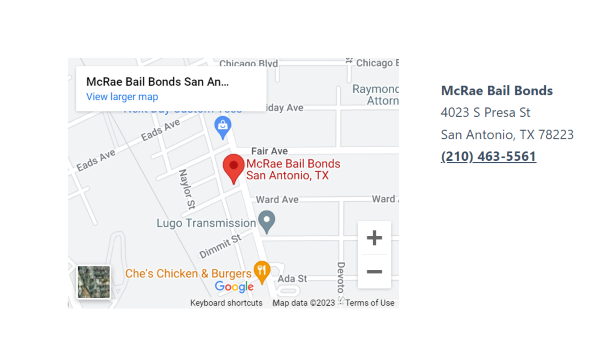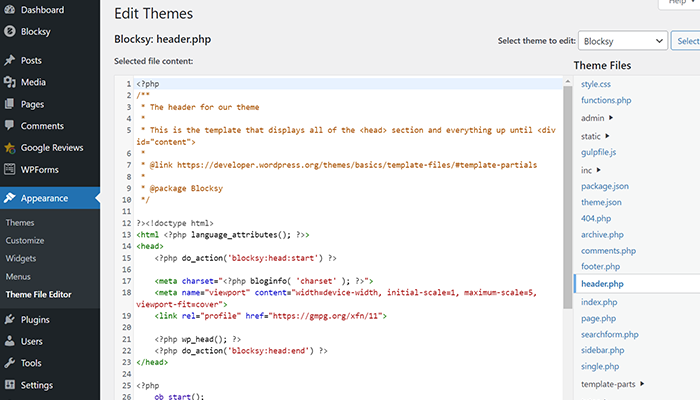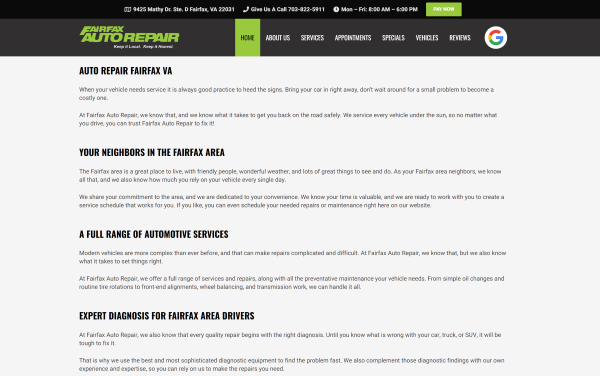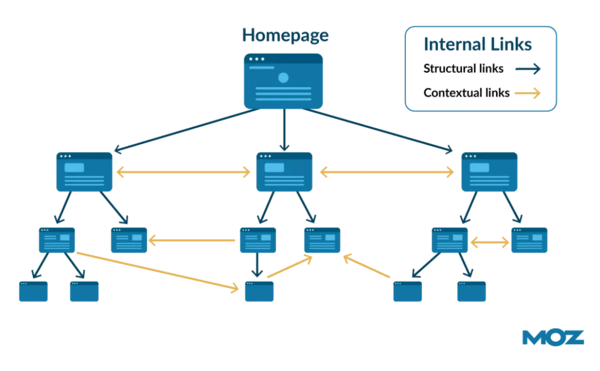
Reading long, in-depth articles is great when you are trying to learn and understand the details of a subject, but once you are done, it can be helpful just to have a simple checklist of the action steps to implement what you just learned.
So that is the purpose of this article. I will have a list of the primary steps you want to take in On-Page local SEO, with just a minimum amount of explanation. I will link each item on this list to a more detailed walk-through of how to complete each step. Okay, let’s get started!
For a more in-depth look at these steps, see my related articles “What Is On-Page Local SEO?” and “The Most Important Aspects of On-Page Local SEO!” See also my article: “Can On-Page SEO Help a Site’s Google Ranking?“
1. Embed Map to Your Google Business Profile

The above image is one I have used as an example in several articles on this site. It is from a San Antonio, Texas, local business named McRae Bail Bonds. The image could have been from any local business; this one just shows the NAP right next to the business’s GBP map embed.
Embedding a Google Map to your Google Business Profile on the location page (or every page of the website if you are a single location business) associates your business to that address clearly in the minds of the various search engines. It does much better than just embedding a Google map to your business address.
Be sure to list your business name, address, and phone number (NAP) information next to or just below wherever you embed the map.
2. Geotag & Optimize Website Images

You will want to optimize all of the images you place on your website to one degree or another. Optimize all of them with the keywords you are targeting. Optimize the ones on each location page (or every page of the website if you are a single-location business) with your NAP information relevant to that location.
Don’t be sloppy entering the information in your images like I was in the above screenshot. Notice I listed two different cities in the same image; not good. Please be accurate and consistent.
The images you plan to put on each location page (or every page of the website if you are a single-location business) also need to be geotagged with the GPS coordinates that apply to each location.
3. Embed Schema Markup

Google likes local businesses to embed Schema Markup on each location page (or in the header of your website if you are a single location business) that gives them your NAP information, GPS coordinates, and links to things like your logo, information about your industry and city, your Google, Bing and Yahoo profiles, and your other most trusted business directory and social media business profiles.
Google likes to get all this information in the format of Schema Markup on your website because it makes it very easy to evaluate your business’s relevance to your industry and city compared to your local competitors.
4. Do Your Technical SEO

Technical SEO is like getting your car’s fluids flushed periodically or keeping your car’s filters and other wear items changed and up to date so that your car, or in this case your website, runs smoothly and its pages are easily located and indexed by the search engines.
The word “technical” intimidates business owners who are not “coders,” but it shouldn’t. Technical SEO is extremely simple and easy to do.
5. Optimize Your Website’s Content

The above example page screenshot comes from Fairfax Auto Repair’s website. They do a decent job of naturally putting keywords in their subtitles and content, which is why I show them.
Your website’s content (pages and posts) can do several things for you if you optimize it correctly. First, it can be written in a way (explaining processes, answering simple questions) so as to demonstrate your expertise, authoritativeness, and trustworthiness in your field.
Second, it can show your relevance to your local area, such as your city. And third, it is how you target the search phrases or keywords (relevant to both industry and location) that you want to outrank your competitors for.
I must add here that how many pages and/or posts you use is based on your strategy and the competitiveness of your industry within your town. The higher the competition you are facing, the more pages you may need, and the more how you interlink things begins to matter.
6. Website Silo Structures & Related Interlinking

In local SEO, interlinking, especially silo structures, can be extremely powerful. You can design it so that certain pages show in the search results for specific keywords, or your home page or location page shows up for all the keywords you are targeting.
You can build a silo all on a single page or use a separate page to target each keyword and supporting keyword; again, it just depends on the competition you are up against.
Also, if you interlink properly, you can build up the authority of your website yourself enough to reduce the need for as many external links from other websites as you might have needed otherwise.
Final Thoughts
When you realize the power of On-Page SEO, you realize you control most of what determines how well you will rank in the search engines compared to your competitors as well as for what you will rank. Obviously, Off-Page SEO is extremely important, too; it is all-important.
Thank you for reading this article all the way to the end! I hope that you learned something and got some benefit out of it! If you did, please share this article on your social media! That will help us grow this channel more than anything! Thank you.
